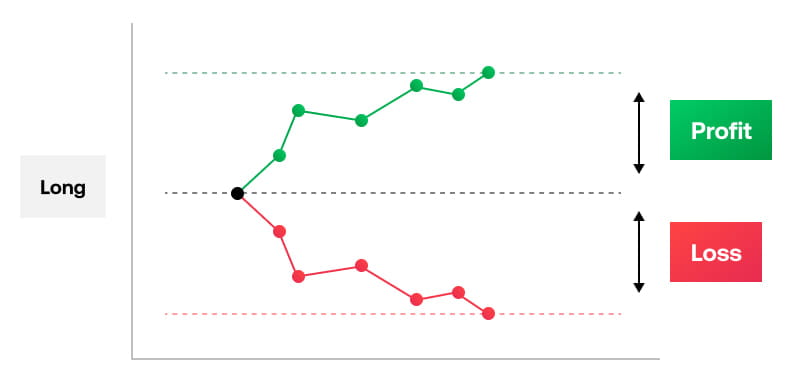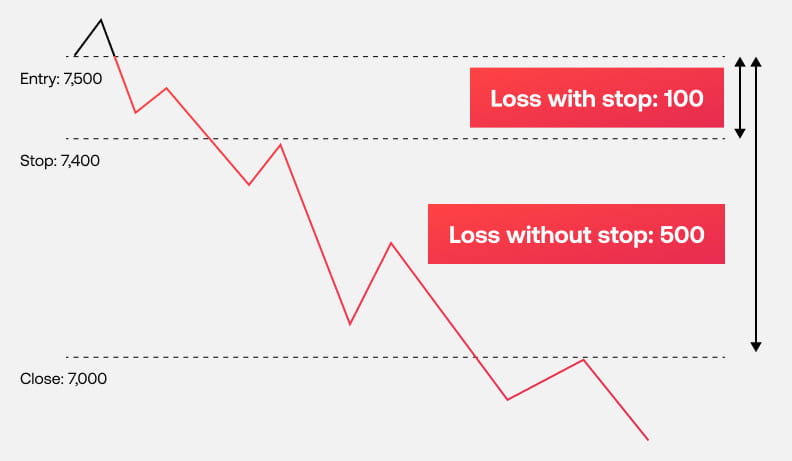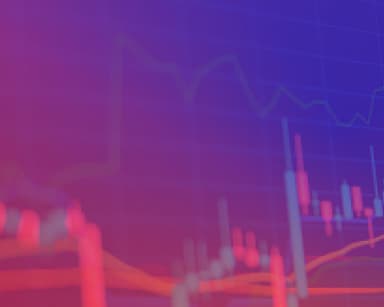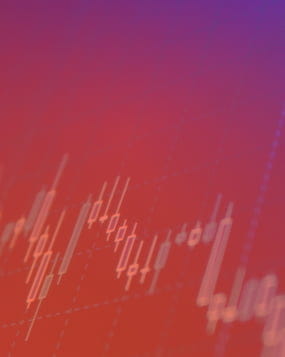Reviewed by Patrick Foot, Senior Financial Writer.
What is index trading?
Index trading is the act of speculating on the price movement of a stock index – a number of stocks that, combined, make up one single market. The value of an index is determined by the combined value of all the stocks listed within it.
Different weightings are applied to some indices that mean certain stocks, such as those with a greater market capitalisation, contribute more to the index’s overall price. Price moves from the top stocks on the index consequently impact its price more than price movement from that index’s lesser-valued stocks.
To find out more, visit our ‘What are indices?’ page.
How to trade indices
Let’s run through the four steps you’ll need to follow to start trading indices: choosing a market, going long or short, managing risk and opening a position. You can follow along with these steps using a free City Index demo account – or if you’re ready for real trading, open a live account.
1. Choosing your market
Most economies have at least one corresponding index, so there are plenty of markets to choose from. With City Index, for example, you can trade hundreds of different index markets from across the world.;
You might want to start out with a market that you're more familiar with, or at least have access to more information about. For instance, the DAX is the main German index and is a popular market to trade, but if you live in the UK you will get far more exposure to UK market news - so you could focus on the FTSE 100 instead.
Once you become more comfortable, you can then branch out and start trading other indices.
Ways to trade indices
There are also different ways to trade the same index:
- Spread betting – Spread betting on indices involves placing a bet on the price movement of an index. How much it then moves equates to how much you will earn or lose. A spread bet is leveraged, which means you stake an initial fee upfront as margin instead of the full cost of the index you’re trading
- CFDs – Indices CFD (contracts for difference) trading is similar to spread betting, but you’re trading a set number of contracts instead of betting on price movement. CFDs are also leveraged which can increase both your profits and losses
- ETFs – ETFs (exchange traded funds) are funds that track an established index, usually using multiple underlying assets. For instance, a FTSE ETF might invest in every FTSE 100 company to mirror the performance of the index itself. ETFs are traded on exchanges, just like shares
- Futures – Index futures are contracts where you buy or sell an index for a price set today, but the trade is settled at a later date in the future. They can be used to speculate on the price movements of an index
Cash indices vs index futures
With City Index, you’ll trade indices via spread betting or CFDs. You can choose whether you want to trade the cash price of an index or the futures price.
Cash indices are markets that are traded instantaneously, have no expiration date and can be used in both long and short-term strategies. You choose when to close out the trade, but you’ll pay overnight financing each night you keep it open.
Index futures have all the costs to trade them incorporated into the spread, so you’ll pay more to open your trade. You won’t pay any overnight financing, but your position will automatically expire when it hits its expiry date.
Which is best for you? It depends on your chosen strategy. For example, if you wanted to hold your position open for the long term, a futures trade might be best for you as you won’t be charged overnight fees. Day traders, on the other hand, would benefit more from cash indices.
Visit our indices trading page to find out more about how you can trade these markets.
Cash indices |
Index futures |
|
|---|---|---|
| Ideal for | Shorter-term trading | Longer-term trading |
| Spreads | Usually tighter than futures markets | Usually wider depending on the type of future |
| Expiry dates | None | Fixed monthly/quarterly expiry date |
| Financing charge | Finance charge may be incurred for positions held overnight | No overnight finance charge is applied as cost is contained in the spread |
| Position rollover | None, as positions don’t expire | Positions can be rolled over to the next month |
| Profit and loss | P&L realised when positions are closed | P&L realised when trade is closed or has expired |
2. Going long or short
Next up is choosing whether to buy or sell. Buying an index will open a long position. If the price then rises, you’ll make a profit. If it falls, you’ll incur a loss. Selling an index means opening a short position. Here, you’re hoping the index’s price falls. You can then buy the index at a cheaper price to close the position out and you’ll make a profit. If the index’s price rises, you’ll lose out.

The advantage of being able to go long or short is that you can take advantage of both bullish and bearish periods.
3. Risk management
Stop and limit orders are key to trading indices successfully. Let’s examine the basics of orders to understand how they can be applied to your trades.
What are orders in trading?
Orders in trading enable you to open and close trades automatically. With stops, you can tell your provider to open or close a position when it reaches a level that is less favourable than its current price. With limits, you’re trading at a better level than the current price.
Both are key to risk management. Here’s how to set them.
Setting stop-loss orders
So, with an indices trade on the FTSE, you might be worried about incurring steep losses if the market suddenly turns against your buy position. If we assume the price of the FTSE is 7,500, you might set your stop-loss order at 7,400. This way, if its price falls to 7,400, your position will be automatically closed. You will lose money, but if the FTSE continues to fall to 7,000, you’d have closed out your trade and avoided incurring an even greater loss.
If you’d shorted the FTSE instead, you could place a stop at 7,600. Then, if the FTSE climbs instead of falling, your position will be closed automatically.

With large daily swings not uncommon with certain indices, it’s worth considering where you want to set your stop-loss order before you place your trade.
Setting limit orders
On the other hand, limit orders (also known as take-profit orders) close out positions at a pre-determined level to secure profit. For instance, if you open a trade on the FTSE at 7,000 you might set a limit order at 7,300. This means once the price reaches that level, your trade will automatically be closed out and your profit will be secured.
4. Open and monitor your positions
Once you’ve decided to go long or short and set your stop-loss and limit orders for your indices trade, you then need to open the position. Opening the position is simple and can be done quickly from within your platform terminal.
All you need to do is select the market you want to trade by finding it in the search bar. Then click ‘Buy’ or ‘Sell’ depending on which direction you want to trade, input add any stops or limits and choose the quantity you want to trade. Finally, click ‘Place Trade’ and your position is opened.
Now your position is open, you’ll need to monitor it.
How to monitor your positions
Given the unpredictability of the markets and the fact that prices can move at any time, monitoring your open positions can make a huge difference to your bottom line.
There are tools you can use to make monitoring the markets easier. You can set price alerts on your trades to receive a direct SMS message anytime there is significant price movement on your market. This allows you to act on volatility as it happens.
It’s also worth following news around the stocks on your index. This is easier when the index is based around one industry, but for the most part, an index will just be comprised of the largest stocks in the economy. Therefore, it might be worth choosing a selection of the index’s most influential stocks and tracking any news around them instead.
Another way to monitor your positions is to stay up to date with the latest company reports.
Earnings season is a period of the year where public companies release reports on their earnings for the previous quarter or year. These can be key factors in dictating a stock’s price and, with sometimes hundreds of stocks reporting each day, can often play out on an index’s price.
What moves an index?
Monitoring your positions and knowing how to combat volatility is important, but it’s also key to know what actually moves an index’s price.
Economic indicators
Indices are often seen as indicators of economic performance. Therefore, when an economy is performing well, it’s likely the corresponding index is going to do well too.
To evaluate how an economy is performing, you’ll want to look at economic indicators.
Interest rate decisions are one such example. These have a huge impact on the economic behaviour of consumers and businesses. If interest rates are lower, consumers have less incentive to save money and overall spending will likely rise. If it does, the economy usually benefits and your index’s price might see positive movement.
On the other hand, high rates suppress spending and can see indices fall.
Company earnings
As mentioned previously, company earnings are another major price factor for indices. Within a one-month period, you’ll likely see all of your index’s constituents report their earnings. One stock seeing its price change off the back of weak or strong earnings won’t cause too much fluctuation for the index, but when all stocks are reporting in a short period, volatility can hit.
If prices all move in a similar direction, you’ll then see a bullish or bearish movement with your index.
Changes to an index’s composition
Indices rarely keep the same constituent stocks from one year to another. The likes of the FTSE simply list the largest stocks by market capitalisation in the UK. If a stock’s market capitalisation falls too low, it will be replaced by a stock of greater value.
Different indices have different stipulations for stocks to be listed on it, but with the FTSE for instance, the constituents are reviewed quarterly and swapped out if necessary. New companies to an index provide a new dynamic, so it’s worth keeping an eye on which stocks are dropped or instated to the FTSE each quarter.



